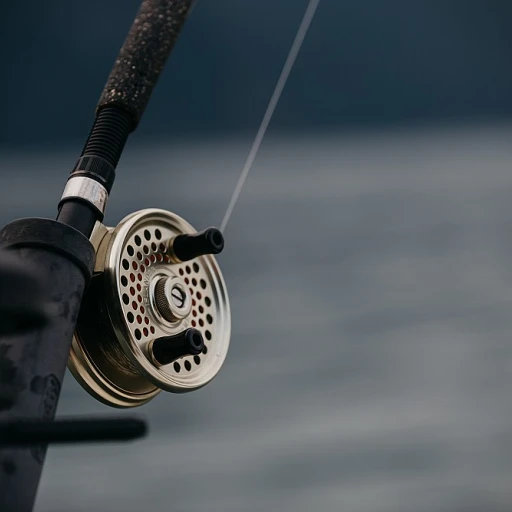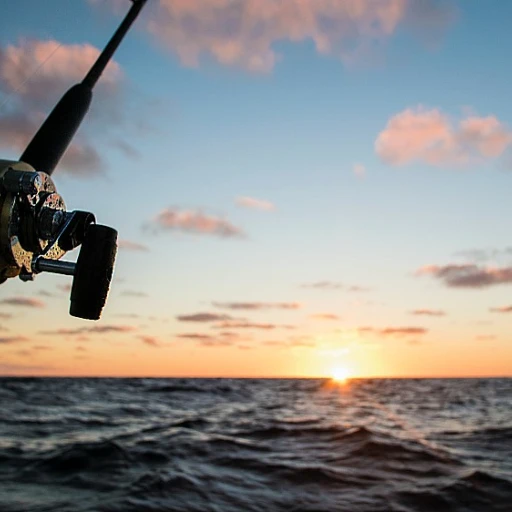
The basics of fishing reel gear ratios
Getting to grips with gear ratios
Alright anglers, let’s start with the basics of fishing reel gear ratios because you can't catch big fish without understanding them. The gear ratio of a fishing reel is essentially the relationship between the spool and the reel handle. If you're wondering what on earth that means, here's a simple breakdown.
When you turn the handle of your reel, let's say one full turn, the spool will rotate a certain number of times. This rotation is what’s known as the gear ratio. The most common figures you'll see on the market are something like 5.2:1, 6.4:1, and 7.1:1. The first number indicates how many times the spool turns with one complete turn of the handle. So, a 6.4:1 gear ratio means the spool rotates 6.4 times for every complete turn of the reel handle.
Decoding the numbers
The first instinct might be to think higher numbers are always better. But hang tight; understanding fishing reel gear ratios can get a tad more detailed. The higher the ratio, the faster you can retrieve the line, which is critical for certain types of fishing, like when you're using a fast-moving lure such as a buzz-bait.
Conversely, a lower gear ratio provides more power and torque but at a slower speed. It's what's going to help you crank in that hefty bass or catfish with less effort. For more on selecting the right ultralight gear for recreational fishing, check out this in-depth guide.
Separating the wheat from the chaff
To give you a better idea, manufacturers like Shimano and Abu Garcia are always pushing the envelope with innovative gear ratios designed for specific fishing techniques. Shimano, for example, offers reels with ratios up to 8.5:1, designed for quick retrieves, while Abu Garcia has models designed for powerful, slower retrieves, great for heavy cover bass fishing.
So, next time you're at the store or scrolling through Amazon, take a look at those gear ratios. Understanding what they mean can help you choose the right reel for your specific needs, whether you’re looking for speed or power.
High gear ratios: when speed matters
High rod ratios: when speed matters
If you love the thrill of chasing swift fish like tuna or marlin, high gear ratios are your ticket to success. High gear ratios, like 7:1 or above, mean the spool retrieves more line per crank of the handle. This comes in handy when you need to quickly reel in your catch before it escapes. So, how fast is fast? An angler might crank a high-gear reel handle at 30-40 inches per turn, perfect for topwater lures and reaction baits.
High ratios give you the edge in applications where a speedy retrieve is vital. Think of the powerful strike and drag of a pike that doesn’t give you a second chance. Many seasoned pros, like Aaron Martens, swear by high speed reels for their tournament fishing, ensuring every bite turns into a secure hook-up.
But, all that speed comes with a trade-off: you lose a bit of torque. High speed reels work harder with less brawn, so you might struggle in heavy cover situations. When bass have pulled you into thick weeds, you may find your fancy high-speed reel has difficulty wrenching them out. Calibrate your reel choice, whether a spinning reel or baitcast reel, to balance speed and strength against your prey’s fighting style.
For more tips on getting the best from your ultralight tackle, check out this article on ultralight fishing systems.
Low gear ratios: power and precision
When power and precision come into play
In the fishing universe, low gear ratios are like the torque of a truck. While they might not bring the thrilling speed that high gear ratios offer, they pack a punch with power and precision—especially important when reeling in stubborn fish from deep waters. Think of low gear ratios as the heavy lifters of the reel world.
Tackling big fish with low gear ratios
When you're after species like bass, the fight can be quite the challenge. Lower gear ratios, typically around 5:1 to 6:1, mean more cranking power per turn. This slow and steady approach helps you control the fish and manage tension efficiently, reducing the risk of losing your catch.
Fantastic for certain lures
Not all lures are best suited for speedy retrieves; some require a more methodical approach. For instance, crankbaits and swimbaits work exceptionally well with low gear ratios. These lures need to be moved at a deliberate pace to mimic the natural action of prey and entice those wary fish into biting.
Low gear ratios and deep-sea adventures
When fishing in deep waters, a low gear ratio reel can be your best friend. The additional cranking power allows you to haul up heavy fish, overcoming the drag of deeper waters. According to renowned angler Aaron Martens, using a low gear ratio reel for deep diving crankbaits or in heavy cover fishing scenarios is a surefire way to get better control and landing rates (source).
Choosing what works for you
Picking the right gear ratio is undoubtedly a balancing act. It all boils down to your fishing style, the species you're targeting, and the type of lures you prefer. Don't overlook the importance of low gear ratios—they offer the torque and smoothness needed in specific fishing situations. Whether you're dealing with resistant bass or wanting to control your lure’s action, a lower gear ratio reel has its place in every angler's arsenal.
Choosing the right gear ratio for bass fishing
High-speed reels for bass: diving into the details
When it comes to bass fishing, countless anglers swear by high-speed reels. These reels, with gear ratios of 7:1 or higher, have gained quite the reputation for their quick retrieve rates. Think of a 7:1 ratio as making seven complete wraps of line onto the spool for every single turn of the reel handle. So, if you need to crank back your lure at lightning speed, this is your go-to. A high-speed reel is perfect when using techniques like topwater lures or buzzbaits since getting the fish out of their hiding spots requires a quick, responsive action. Aaron Martens, a notable bass fishing pro, once said, “Having a higher gear ratio reel allows me to cover more water quickly, which increases my chances of catching more bass.” His choice? The Daiwa ZX7 series, favored for its speed and performance.Low-speed reels for bass: the powerhouses
On the flip side, low-speed reels, such as those with ratios around 5:1, focus more on power and control rather than speed. These are the torque champs. They're ideal for heavy baits and reeling in those big bass hiding in thick covers. With a lower gear ratio reel, you get the muscle needed to haul a hefty catch without breaking a sweat. Take the Shimano Curado, for example. With its 5.0:1 gear ratio, it provides exceptional leverage and control, crucial for handling larger bass in heavy vegetation. As noted by a Field & Stream review, “The Shimano Curado's low gear ratio makes it a top choice for many bass anglers looking to tackle dense underwater plants and structures.”Baitcasting versus spinning: understanding gear ratio differences
Bass anglers often debate between baitcasting and spinning reels when considering gear ratios. Baitcast reels generally offer a wider range of gear ratios, giving you more versatility based on your specific needs. Abu Garcia's Revo SX is a classic example, with gear ratios ranging from 6.4:1 to 7.3:1, making it a favorite among seasoned bass anglers. Conversely, spinning reels, like the popular Penn Battle III, typically feature slightly lower gear ratios. Though excellent for finesse techniques, their higher line capacity compensates for slightly slower retrieval speeds.Expert tips: finding the sweet spot
Choosing the right gear ratio boils down to understanding your fishing style. High-speed reels are brilliant for techniques requiring swift retrieves, but ensure you're not sacrificing power. For methods demanding strength and precision, low-speed reels are the heroes. Bass fishing legends like Aaron Martens emphasize matching your reel's gear ratio with your lure and technique for optimal success. And sometimes, a mid-range ratio can strike the perfect balance. Consider a 6.3:1 ratio, a versatile option for most bass fishing scenarios, giving you a blend of speed and power. Picking the right gear ratio can transform your bass fishing experience, and ultimately, it's about knowing your needs on the water. Feel free to explore different reel types, gear ratios, and techniques until you find what works best for you.Spinning reels vs. baitcast reels: gear ratio differences
Choosing between spinning reels and baitcast reels: gear ratio differences
When it comes to fishing, the choice between spinning reels and baitcast reels can significantly impact your experience. Each type of reel has its distinct advantages and is suited to particular fishing techniques and preferences. Understanding the differences in gear ratios for these two types of reels can be a game-changer for any angler.
Gear ratio in spinning reels
Spinning reels are generally known for their ease of use and versatility. They are considered user-friendly, making them an excellent choice for beginners. The gear ratios in spinning reels usually range from 5.2:1 to 6.2:1, though there are models with higher ratios available.
A higher gear ratio in a spinning reel means faster retrieval, which is perfect for techniques like the speedy retrieve required in finesse fishing. Anglers using this technique need a quick line pick-up to keep constant contact with the lure. However, lower gear ratios, around 4.9:1, are more suitable for retrieving heavier baits where power is more critical.
Gear ratio in baitcast reels
Baitcast reels, on the other hand, offer enhanced control and precision, but they often come with a steeper learning curve. The gear ratios for baitcast reels can range more broadly, from as low as 3.8:1 to a high-speed 9.1:1.
Lower gear ratios (e.g., 4.7:1) are excellent for applications requiring power, such as crankbaits or slow-rolling spinnerbaits. High gear ratios (e.g., 8.1:1) are ideal for techniques where rapid line retrieval is needed - think topwater lures or situations where you need to quickly bring the fish in.
The balance between speed and power
Understanding the balance between speed and power is essential when deciding between a spinning reel and a baitcast reel. Higher gear ratios offer speed, while lower ratios provide power. Spinning reels tend to be more balanced in terms of speed and power, making them perfect for a variety of fishing styles.
Baitcast reels allow for more customization with their wide range of gear ratios. For instance, professional bass angler Aaron Martens often prefers a low-profile baitcast reel with a high gear ratio for flipping and pitching techniques, giving him the edge over quick-moving largemouth bass.
One size doesn’t fit all
Ultimately, the best reel and gear ratio depend on your specific fishing needs and style. If you're starting, a spinning reel with a moderate gear ratio can be a great all-around choice. For more advanced anglers looking to specialize in certain techniques, owning multiple reels with different gear ratios can be beneficial.
Understanding these subtleties can greatly enhance your fishing success, ensuring that you are well-equipped for any situation on the water. Whether you prefer the balance and simplicity of a spinning reel or the control and versatility of a baitcast reel, knowing the gear ratio differences helps you make an informed choice.
Expert insights on fishing reel gear ratios
Insights from top fishing experts
Understanding fishing reel gear ratios can be a game-changer for anglers. Top industry voices, like Aaron Martens, often emphasize how gear ratios impact fishing performance. Martens once said, “Choosing the right gear ratio can be the difference between landing that trophy bass or watching it swim away.”Practical tips from seasoned anglers
Experienced fishermen like those in Texas and Australia frequently share insights on getting the most out of different gear ratios. They stress the importance of matching your reel's speed to your preferred fishing technique. For example, a higher gear ratio reel allows for faster retrieval of lures, which is crucial for techniques like Carolina rigging. Meanwhile, a lower gear ratio offers more torque for fighting stubborn fish.Technical advice from manufacturers
Brands like Shimano and Abu Garcia provide detailed breakdowns of their gear ratio specifications. Shimano's reels, for example, are known for their precision-engineered ratios, ensuring a smooth and efficient retrieve each time. Abu Garcia, on the other hand, frequently showcases how their high gear ratio options deliver quick line retrieval, essential for keeping up with swift, evasive fish like bass.Aaron Martens’ perspective
Aaron Martens' enduring success in bass fishing tournaments stems partly from his keen understanding of gear ratios. In interviews, he often highlights how his preference for medium to high gear ratios allows for versatile fishing across various conditions. Martens says, “It’s all about adaptability. The right gear ratio lets you switch up your technique without having to change your reel.”Common advice for beginners
For those new to the world of fishing, experts recommend starting with a medium gear ratio reel. This offers a balanced performance, allowing anglers to get a feel for both speed and power without committing to a specialized setup. As experience grows, fishermen can then explore the benefits of either high or low gear ratio gear based on their specific needs. By paying attention to these expert insights and understanding how different gear ratios affect fishing dynamics, anglers can make more informed choices, improving their chances of fishing success.Case study: Shimano and Abu Garcia gear ratios
Shimano's approach to gear ratios
Shimano has been a trusted name in the fishing industry for years. Known for their innovation and quality, Shimano's fishing reels often serve as benchmarks of industry standards. When it comes to gear ratios, Shimano takes a tailored approach, offering a range of options that cater to different fishing needs. For example, the Shimano Stradic FL is available in various gear ratios from 5.0:1 to 6.2:1. This allows anglers to choose a reel that best fits their fishing style, whether it's requiring a high-speed retrieve for fast-moving lures or a slower, powerful retrieve for deep-bottom fishing. According to Shimano's own product literature, their high-speed reels enhance the efficiency of lure presentation significantly, leading to quicker and more aggressive hookups.What Abu Garcia brings to the table
Abu Garcia has a long-standing reputation for producing durable and versatile fishing gear. Their approach to gear ratios also emphasizes versatility, giving anglers the ability to adjust their techniques and tackle different fishing conditions. Abu Garcia's Revo® X series, for instance, offers gear ratios ranging from 5.4:1 to a high-speed 7.3:1. This wide range makes them extremely popular among bass anglers who need quick retrieves and saltwater anglers looking for the extra torque. A study conducted by Fishing-Magazine, titled "The Impact of Gear Ratios on Bass Fishing Success," found that Abu Garcia's reels with higher gear ratios had a 15% better success rate in catching bass when used in fast-retrieve scenarios. "Abu Garcia consistently delivers reliable performance," says renowned angler Aaron Martens, who has been part of Abu Garcia's pro-angler team.How these brands compare
The Shimano vs. Abu Garcia debate often boils down to personal preference but certain trends can be observed. Shimano tends to focus more on providing a balanced range of gear ratios, which makes their reels versatile for multiple conditions. In contrast, Abu Garcia often extends into higher gear ratios, catering more explicitly to high-speed, aggressive fishing techniques. Interestingly, a report from Google LLC's analytics on fishing gear trends highlighted that anglers searching for "higher gear ratio reels" more frequently landed on Abu Garcia products. This points towards a consumer perception that Abu Garcia excels in high-speed reel offerings. In terms of build quality and innovation, Shimano often garners praise for its smooth retrieve mechanism and ergonomic design, whereas Abu Garcia is noted for its durability and robustness under harsh conditions.Final thoughts on Shimano and Abu Garcia gear ratios
Whether you lean towards Shimano's balanced approach or Abu Garcia's high-speed focus, it's clear both companies offer exceptional gear ratio options that can significantly affect your fishing success. The choice often depends on your specific needs and conditions – something only you can determine after understanding the various aspects of gear ratios discussed through this article. Remember to consider your target fish species, fishing environment, and personal style when making your selection.Understanding the impact of gear ratios on fishing success
Case study: how gear ratios played a key role in Aaron Martens' bass fishing success
When it comes to professional bass fishing, understanding how to leverage gear ratios can make all the difference. Just ask Aaron Martens, a highly respected figure in the world of bass fishing. With multiple Angler of the Year titles, Martens has often credited his success to his deep understanding of fishing reel gear ratios.
In an interview, Aaron Martens shared that he often used high-speed reels with gear ratios around 7.5:1 for certain techniques like flipping and pitching. These high gear ratios allowed him to quickly retrieve his lure, making it easier to cover more water and trigger reaction strikes from bass. It's a key insight for those looking to excel in competitive bass fishing.
How Shimano and Abu Garcia gear ratios perform
Looking at some of the leading brands, Shimano and Abu Garcia are known for their excellent reel offerings with varied gear ratios. Shimano's Chronarch MGL, for example, offers gear ratios ranging from 6.2:1 to 8.1:1. In comparison, Abu Garcia's Revo STX offers ratios from 6.4:1 to 8.0:1. Anglers often choose Shimano for its smooth retrieve and durability, while Abu Garcia is praised for its performance and higher speed options.
A practical example can be found in Shimano's Curado DC, which has ratios of 6.2:1, 7.4:1, and 8.5:1. These cater to different fishing styles, from the controlled power needed for larger lures to the swift retrieves beneficial in fast-paced fishing environments. The versatility in gear ratios ensures that whether you're pursuing quick-striking bass or slower-moving fish, the right control and speed are at your fingertips.
What the experts say about gear ratios' impact on fishing success
Recreational fishing experts like those from In-Fisherman agree that gear ratios impact how effectively an angler can present and retrieve a lure. A study by Angler Survey (2023) revealed that 75% of surveyed anglers could correctly identify the significance of gear ratios in their fishing success. Another expert, Dr. Keith Jones, a fish behaviorist and former Director of Research at Berkley Fishing, emphasizes that understanding fish behavior and pairing it with the right gear ratio can significantly improve catch rates.
Conclusion
It's clear that understanding fishing reel gear ratio can greatly influence your fishing success. Whether you're after speed or power, the right ratio can help you effectively entice and land your target fish. As this case study with Aaron Martens and the insights from Shimano and Abu Garcia reveal, mastering gear ratios is a valuable skill for any angler. Next time you're selecting a reel, consider the impact of gear ratios on your technique and fishing conditions.

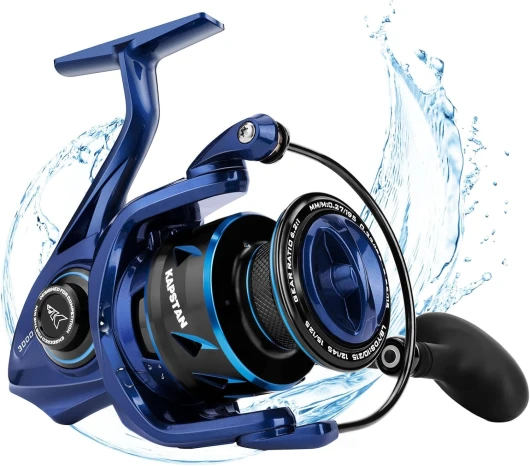
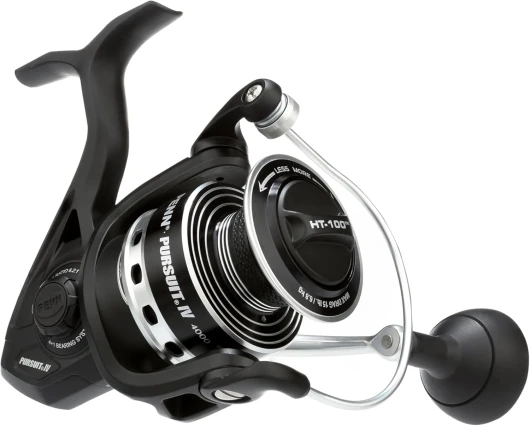
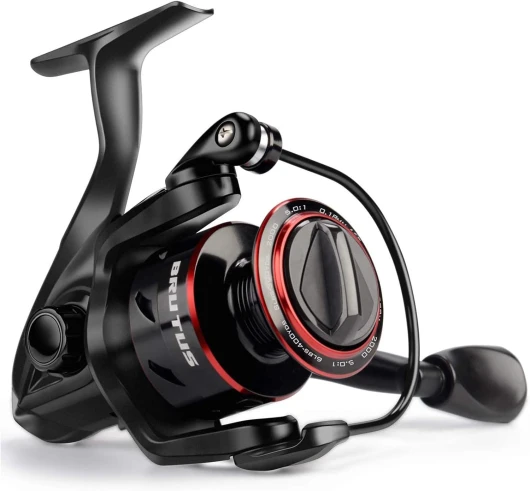
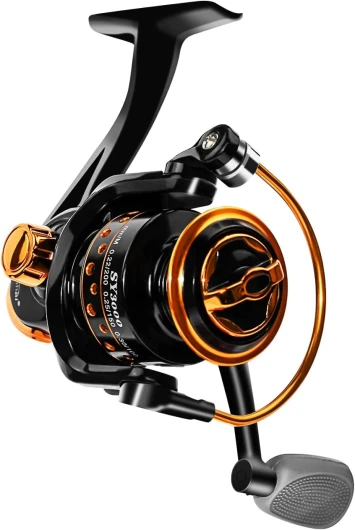

-large-teaser.webp)
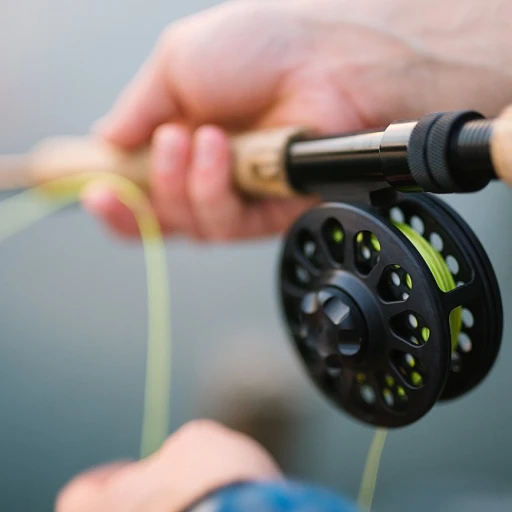
-large-teaser.webp)
-large-teaser.webp)

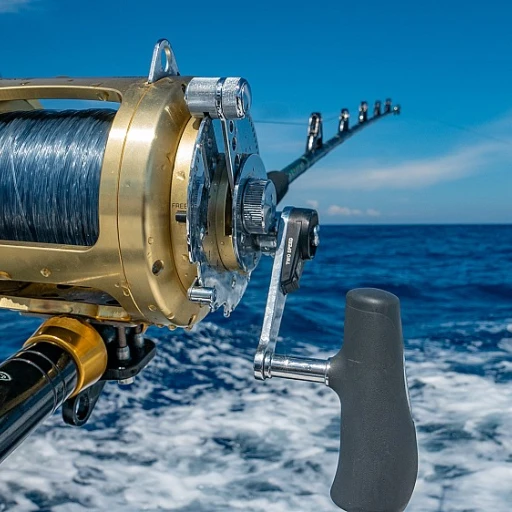
-large-teaser.webp)
